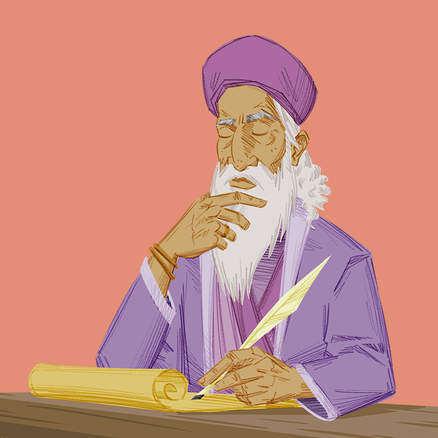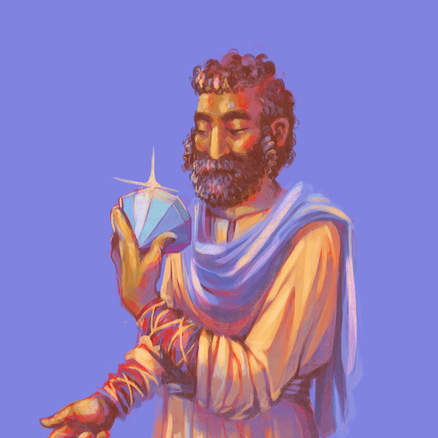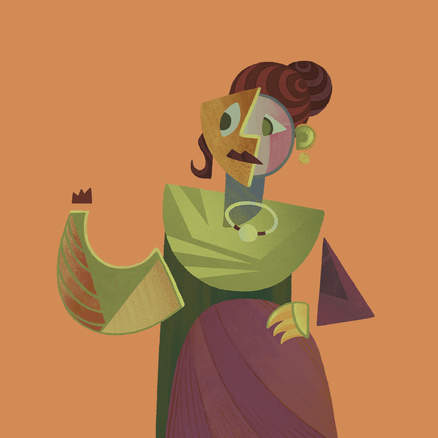
Literary Styles
To better understand the Bible, we have to first learn to recognize the different literary styles used by the biblical authors.
Script
Introduction [00:00-00:36]
Jon: The Bible is a collection of many books telling one unified story from beginning to end. But all those books were written in different literary styles.
Tim: Yeah. Think of it like walking into a bookstore where every aisle has a different kind of literature. There’s history, or poetry, or nonfiction. When you choose an aisle and pick up a book, you’re going to have very different expectations, different things that you’re looking for.
Jon: Right. They’re all literature, but they communicate in really different ways.
Tim: Yes, and so the same thing is true for the Bible. If you don’t pay attention to what style it’s written in, you will miss out on the brilliance of each book.
Jon: So what are the main types of literature in the Bible?
Narrative [00:37-02:26]
Tim: Well first and foremost is narrative. That makes up a whopping 43 percent of the Bible. After that is poetry, which is 33 percent of the Bible. And then there’s what you could call prose discourse, which makes up the remaining 24 percent.
Jon: Nearly half of the Bible is narrative!?
Tim: Yes, and this is no accident. Stories are the most universal form of human communication. Our brains are actually hardwired to take in information through story.
Jon: And stories are really enjoyable. Why is that?
Tim: Well stories train us to make sense of the seemingly random events that happen in life by taking those events and them putting them in a sequence. And then together you can start to see the meaning and purpose of it all.
Jon: And what links this all together?
Tim: Well good stories always have a character who wants something. And then through these characters, the author can explore life’s big questions, like “who are we?” or “what’s really important in life?”
And a good story always involves some kind of conflict.
Jon: Some challenge to be overcome, just like in our own lives.
Tim: And that forces us to think about our own challenges––why there’s so much pain and disappointment in the world––and then what can we do about it. And stories usually end with some kind of resolution, giving us hope for our own stories.
Jon: Since these are Bible stories, are the characters showing me how I should live?
Tim: Yeah that’s not quite the point. Most Bible characters are deeply flawed––you should not be like them. But we are supposed to see ourselves in them, which helps us then see our lives and failures from a new perspective. And without even realizing it, these stories will start to mess with you and change how you see the world and other people and yourself.
Jon: Now there are different types of narrative in the Bible.
Tim: Yeah. There’s historical narrative, but also narrative parables, and short biographical narratives like the four Gospels. We’ll look at all these in later videos.
Poetry [02:27-03:20]
Jon: Okay. Next up is poetry, which honestly I don’t read a lot of.
Tim: Yeah. You’re like most people. But one out of every three chapters in the Bible is poetry.
Jon: Yeah. Why so much poetry?
Tim: Well poems mainly speak through dense, creative language, linking together images to help us envision the world differently. Poems use lots of metaphor to evoke your emotions and your imagination.
Jon: Lots of fancy language, but wouldn’t it be easier just to tell me what I need to know?
Tim: Well think about it. In life, we tend to form mental ruts, and we think in these familiar, well-worn paths that are very hard to get out of through logic or reasoning. And what good poetry does is force you off the familiar path into new territory.
Jon: Sneaky.
Tim: And there is different types of poetry in the Bible. There’s lots of types of songs, or psalms. There’s the reflective poetry of the wisdom books, and then the passionate resistance poetry of the prophets.
Prose Discourse [03:21-04:04]
Jon: Okay. The last big literary type is called prose discourse, and it makes up a quarter of the Bible.
Tim: Yeah. These are speeches, letters, or essays. And the focus here is building a sequence of ideas or thoughts into one linear argument that requires a logical response.
Like hey have you thought about this thing? You should also consider how it connects to this other thing. And if you do, then you’ll see that this is the result. And in light of that conclusion, therefore, you should probably stop doing that one thing so that this other thing will be the outcome.
Jon: So you are persuading me with reason.
Tim: Yeah. Discourse forces you to think logically and consistently and then do something about it. Biblical discourse is found in law collections, in wisdom literature, and the letters written by the apostles.
Conclusion [04:05-04:43]
Jon: Okay, so each book of the Bible has one literary style.
Tim: No. Actually most books have a primary literary style, like narrative for example. But then embedded in the narrative, you’ll come across poems or parables or collections of laws. Every book is a unique combination of literary styles.
Jon: And to read that book well, I need to become familiar with each literary type and how it works.
Tim: Yeah, so you know what to pay attention to and what questions you should ask. But before we look at each type, there’s one more unifying feature of biblical literature that’s really important and really cool. And that is what we’ll explore next.
Related Content























